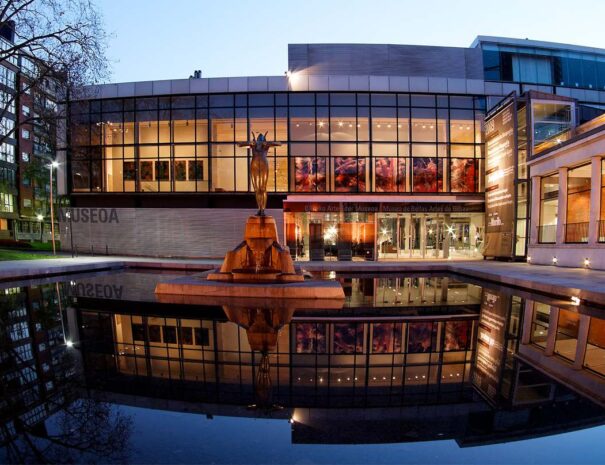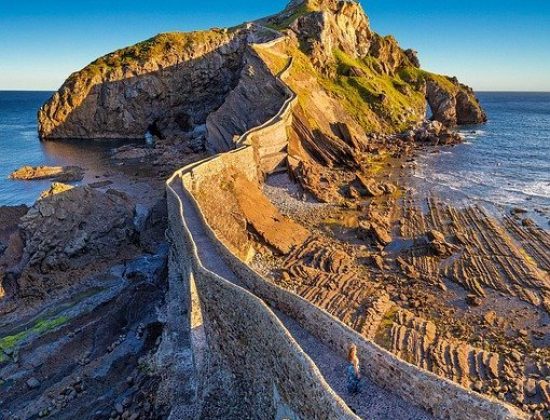
Bilbao
The best travel guide to Bilbao with recommendations on where to stay and eat, top sights and insider tips
Bilbao is Spain´s 4 largest city. It is the capital of the province of Vizcaya, has more than 400,000 inhabitants. It is on the bank of the river Nervión (‘Ibaizábal’ is Basque for ‘wider river’), is an episcopal seat and one of Spain’s biggest harbours and industrial centres. In recent years the “botxo” (the hole as locals refer to it) Bilbao has transformed itself and its industrial history is being “shadowed” by architectural inspiration, art galleries and a plethora of cultural activity
Bilbao travel guide - Contents
Our 3 top accomodations in Bilbao
Top Reasons To Visit Bilbao - Top things to do in Bilbao
The Guggenheim museum building
This building is without a doubt one of the world´s most impressive pieces of modern achitecture. You may not feel like visiting the museum and yet decide to visit Bilbao to just enjoy the building from outside. Despite this art museum has a few detractors, we believe the building is simply impressive. Its contemporary art collection is eclectic and despite it may not please everyone, the Guggenheim Museum is, without doubt, not to be missed! The museum is located on the left bank of the estuary and its shape attracts all gazes.
Art Galleries
The Guggenheim is not the only art gallery worth visiting in Bilbao. The Museo de Bellas Artes is located at 5 minutes walk from the Guggenheim and for many its collection is not just a perfect match to the one at the Guggenheim´s, but more complete and appealing.
Casco Viejo or pintxos dreamland
Bilbao´s old quarter is a noisy district full of small bars and shops. At its heart you will find the 7 calles. The Casco Viejo is home for Bilbao´s Gothic Cathedral (not one of the top cathedrals in Spain but yet worth a visit). La Plaza Nueva boast many modern tapas and wine bars and is the location for a flea market on Sunday mornings.
Bilbao is one of the best places to enjoy pintxos in Spain. The Casco Viejo area offers the most traditional bars, and at Plaza Nueva you will be able to enjoy bars and taverns that offer more modern pintxos. There are seven streets you can get lost at Casco Viejo: Somera, Artecalle, Tendería, Belosticalle, Carnicería, Barrencalle and Barrencalle Barrena. In the Plaza Nueva we recommend you Gure Toki or the Sorginzulo. Don´t forget to try bacalao al pil pil (a traditional cod recipe made up with just cod, garlic, olive oil, and peppers. Simple and Delicious when the ingredients are Good! You can end any meal with a Carolina, a typical pastry. Our favorite place to enjoy them is Don Manuel
Great excursions at less than 1 hour
San Juan de Gaztelugatxe has become famous in recent years thanks to Game of Thrones, and is knowntoday by more people than the famous Puente Colgante, one of Bilbao´s highlight at less than 15 minutes drive from Bilbao and which connects Portugalete with Las Arenas (Getxo). Also known as the Vizcaya Bridge, this suspended bridge is located at the end of the estuary between the towns of Getxo and Portugalete. The bridge was built to connect the two banks of the estuary without the need to interrupt the traffic of ships.
The fishing village of Bermeo or Getaria (very close already to San Sebastian) are also great options for a day tour. Small wineries that specialise in txcaoli wine and Caserios that produce local cheeses can also be excellent ideas for a short tour from Bilbao.
Beaches & surf
There is no beach in Bilbao itself and the Ria cannot be used as a beach! But there are as many as 23 beaches at less than one hour drive from Bilbao. Some of them (Labarrasterra, Arrigunaga, or Ereneaga)can be accessed with public trasnportation from Bilbao with metro lane 1. Mundaka and Getxo are great for surfers. Staying in Bilbao and enjoying a relaxing beach day is possible despite this may not be the main objective for your visit to Bilbao.
Learn about the history of soccer in Spain at San Mames
A piece of land in Lamaico, an area near Getxo and the docks, hosted in 1893 the first soccer match in Vizcaya. The match had English workers play against a group of soccer pioneers. In 1898 seven pioneers from the Zamacois sports center founded the Athletic Club. Its name speaks about the British influence of the team and of its history. The Athletic is something very important in the daily life of Bilbao. Locals talk about it, argue about it and share their passion for the club.
Relax in a park and enjoy heritage
Bilbao is built next to the river. One of our favorite walks in Bilbao takes you from the Guggenheim museum to the Arriaga Theatre, next to the old district. We love the architecture of this iconic theatre, and we do also love another green area in Bilbao: the Doña Casilda Park. It is located on the way from the Guggenheim to the San Mames stadium. This is one of the lungs of the city and a stroll in it is an ideal plan after a visit to the Guggenheim museum. A third idea to enjoy a green area in Bilbao is the Artaxanda viewpoint. You could walk all the way to this fantastic park and viewpoint, though we strongly recommend you to get the famous funicular of Artaxanda. It is inexpensive and the children love it! A romantic and fun plan to enjoy almost for free in Bilbao.
Weather In Bilbao
Bilbao is known as one of the cities where it rains most in Spain. From September till May you can get rainy days often (as much as 1 out of every 4 days) By a wet day we do not mean a few rain drops…
Temperatures are moderate and the coldest months of the year are from November till february with high averages between 55 and 60 F and low averages between 40 and 48F
Best Time To Visit Bilbao
Our favorite months to visit Madrid are from May to mid October. Bilbao´s Semana Grande (Aste Nagusia) is end of August, a wekk full of activities and lots of fun!
Most popular attractions in Bilbao
Bridge of Vizcaya (Portugalete)
The Bridge of Vizcaya also known as Portugalete Bridge is the amazing feat of engineering that spans the width of the Ibaizabal estuary, just west of Bilbao.
Designed by the Basque architect Alberto de Palacio and completed in 1893, stands 45-m-high and 160m wide. It features a mix of 19th-century iron working traditions with the then-new lightweight techniques of twisted steel ropes.
It was the first such bridge to carry both people and traffic on a high suspended gondola and served as the inspiration for many similar bridges in Europe, Africa, and America.
Because of its unique design, it is widely regarded as one of the most outstanding architectural achievements of the Industrial Revolution and was named a UNESCO World Heritage Site in 2006.
Where is the Bridge of Vizcaya
The Bridge unites the two shores of the what is known as the ría de Bilbao (or The Idiazabal estuary). The western shore belongs to the villa de Portugalete y and the eastern shore to the city of Getxo. It is located 13 km north of the center of Bilbao, at the mouth of the estuary.
History of the Bridge of Vizcaya
During the XIX century, the port of Bilbao was also quickly becoming one of the most important and busy ports in the country and therefore the estuary was becoming a highway for arriving and departing ships, and merchants were searching for a more efficient way to get goods across the river.
Also, bathing in saltwater was becoming a bit of a fad and was thought to be a good practice to improve one’s health. As a consequence affluent residents of Bilbao would flock to the shore every chance they got. But weekenders needed a means of quickly getting across the estuary to access the most fashionable spas and beaches, on the other shore.
To solve the dilemma Alberto Palacio designed a bridge that could get people and products across quickly but didn’t interrupt the steady flow of ships heading down river or out to sea. And thus, the first hanging bridge was invented. The bridge consisted of a metal structure, from which a gondola hung that was pulled from one shore to the other. This way ships could sail freely and the gondola would cross the river whenever there was an opening in the traffic.
How to get to the Bridge of Vizcaya?
The bridge is accessible from both shores. If you are traveling by car, it will take about 20 minutes to get there from the center of Bilbao or from, for example, the Guggenheim Museum.
You can also take the Metro (subway). Just take line 2 to Portugalete station. From there you have a 15-minute walk before you arrive at the bridge. If you prefer to arrive on the western shore, take line one to Areeta station, from there you will have to walk 800 meters.
Visit the Bridge of Vizcaya
It is important to note that the bridge is still used daily by thousands of locals as a means of getting across the Ria de Bilbao. The gondola continually crosses the river 24 hours a day, 7 days a week, 365 days a year.
If you want to buy a ticket to cross, you can do so. The ticket costs 0.45€ a person or 1,60€ if you are crossing with a vehicle, and the trip takes about 90 seconds.
If you want a more in-depth look at the bridge you can also buy a tourist pass. This pass will allow you to cross the bridge on foot, over the steel structure, and get back on the gondola. This option will cost you 9€ per person and 2€ extra is you want to rent an audio guide. If you choose this option, you can do so between 10:00 am to 19:00 in winter and 20:00 in summer.
This option will allow you to leisurely explore the bridge, take pictures, and enjoy one of the most unique and exhilarating views in all of Bilbao.
Best day excursions from Bilbao
Brief History of Bilbao
The city was founded in 1300 by Don Diego López de Haro, Lord of Vizcaya, and by the 15C it had become a major harbour, which later to be much fought over. Local ore made Bilbao one of the first centres of the iron industry swords from Bilbao. In 1475 Ferdinand the Catholic conferred the status of Villa Noble’ on the city. In the 15C it began commercial trading with France, England and Guinea, and later with the West Indies; it also provided part of Philip II’ Armada fleet. In the first half of the 17C the city fought off attacks from the Dutch, English and French and between 1808-13 it was taken by the French. During the Carlist Wars it was besieged several times.
More great Cities in Spain
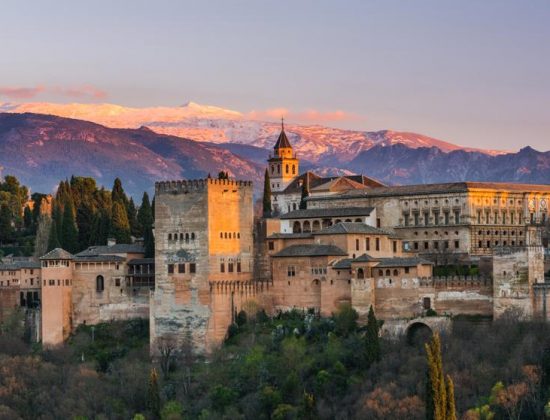
Southern Spain
In our guide to Southern Spain you will find the top things to do, best hotels and restaurants as well as less touristic plans. Activities, tours and deals … Read More
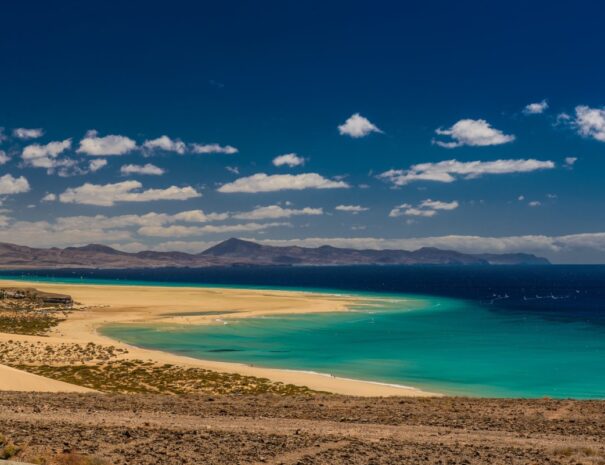
Fuerteventura
Discover in this Fuerteventura guide the best ideas to make the most of your vacation. Top resorts, attractions and tips by local experts. … Read More

Santander City Guide
Check out out Santander City Guide to get all the info you need to plan the perfect visit to this spectacular city in Northern Spain. … Read More
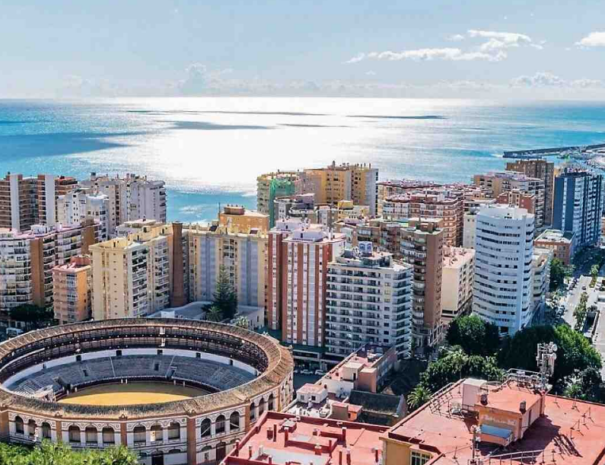
Malaga City Guide
Check out our Malaga City Guide to find all the information you will need to plan the perfect visit to this amazing city in Southern Spain … Read More
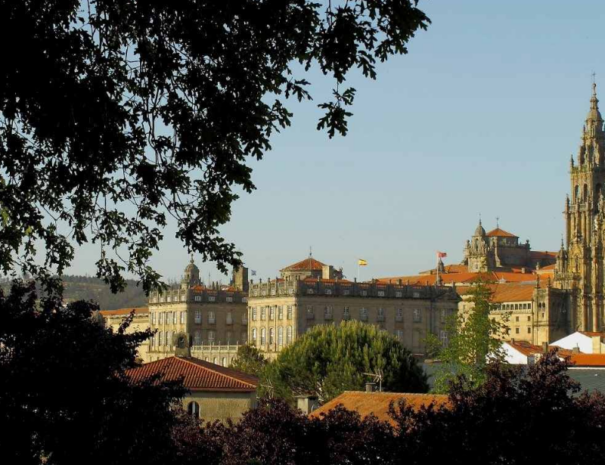
Santiago de Compostela City Guide
Check out our Santiago de Compostela City Guide to get all the information you will need to plan the perfect visit to this spectacular city. … Read More

Merida City Guide
Check out our full Merida City Guide to get the full breakdown on this spectacular city that is chock full of Roman history and monuments. Depending on your travel schedule you may decide to dedicate 1 or 2 days to Cordoba. One day is enough to enjoy the most important highlights and get a good feeling of the city. With 2 days you will be able to enjoy more attractions and even an excursion to MEdina Zahara. We have built this city-break in Cordoba including our recommendations for hotels, … Read More
is proudly powered by WordPress

